Moog Mariana Bass Synthesizer – Monster tones with 40 % off!
Virtual Synthesizer Made by Moog
Moog overhauls your bottom end with the fat, punchy and dynamic Mariana bass synth. It borrows liberally from the Taurus, Sub Phatty, Minitaur and Model D and yet finds depth in its own identity. Now with 40 % off!
Deal
You can currently get the software synthesizer plugin Mariana with a price reduction of 40% off the original price – check here at Plugin Boutique (affiliate)!
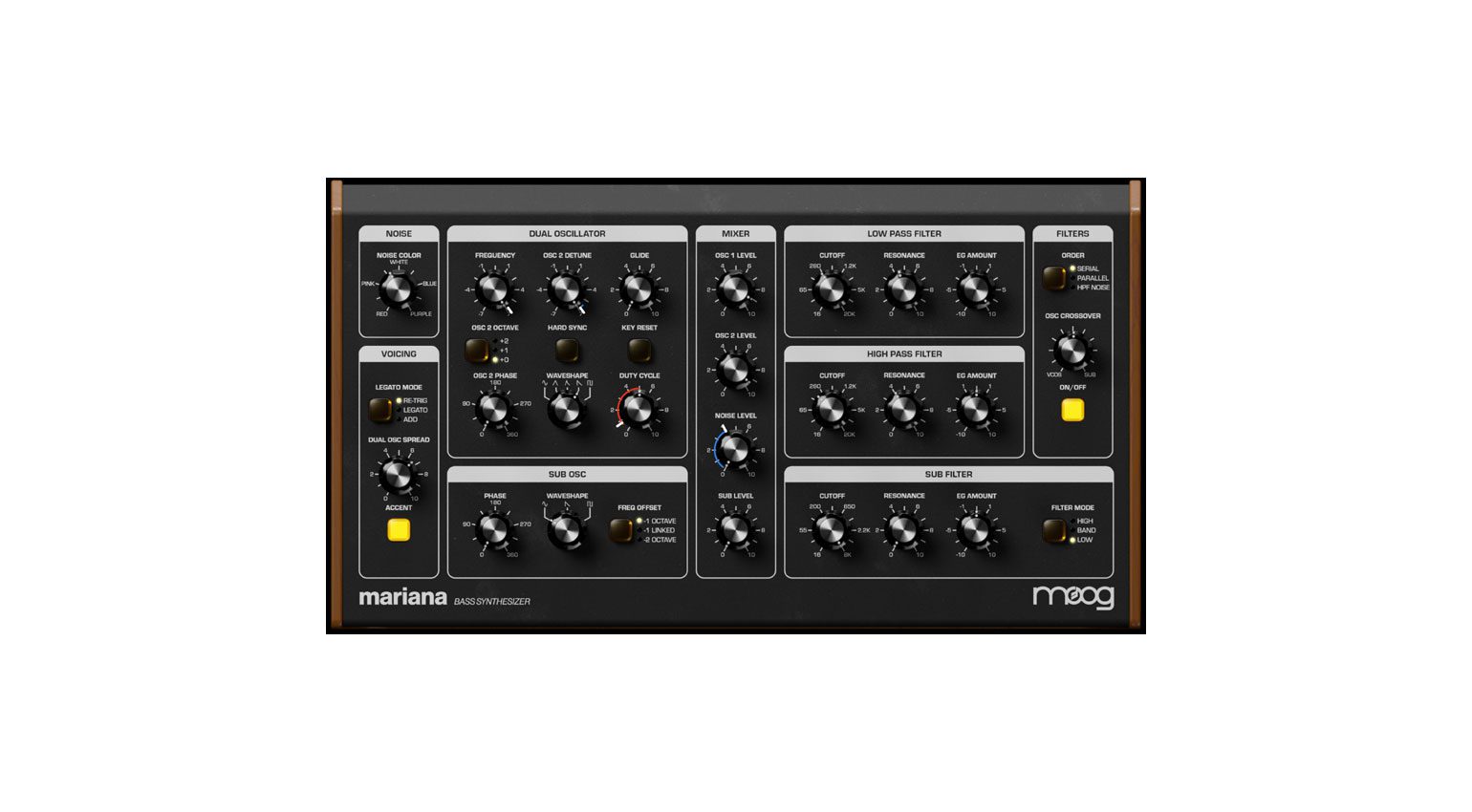
Mariana – Review
It should seem odd to feel excited by the arrival of another software instrument from a company famous for its dedication to hardware. But Moog has consistently produced superb software instruments that can brilliantly innovate like the Animoog or lovingly replicate like the Model 15 and Model D App. The recent MoogerFooger effects plugins even challenged the way plugins can interact within a DAW. Who knew that such a classic old manufacturer could push so well into new concepts? And so I met the arrival of Mariana with a good-sized bucket load of glee.
It’s a Bass Synthesizer
First and foremost, Mariana is designed as a bass synthesizer. It gathers all the low-end tones and deep waveforms like dark clouds brewing for a storm. The front end is so remarkably familiar (almost boringly so) that you have no inkling of the immense pressure of movement about to be unleashed upon your speakers. By golly, this has some punch.
Mariana is actually two synths layered on top of one another, identical, combined and yet fiercely independent. Each synth features a dual oscillator, sub-oscillator, multi-coloured noise generator, high and low pass filter, and a separate filter for the sub. Each synth has three LFOs, envelopes for the filter and amplifier, a separate modulation envelope and two random generators. It’s all mixed together through effects and various forms of saturation and compression. To say it’s meaty is an understatement.
Dual Oscillations
The foundation of the Mariana can be found in the interplay of the three oscillators. Our primary sound source is the Dual Oscillator, which houses two VCOs with shared waveform selection and Duty Cycle. The Duty Cycle is interesting in that it pushes that PWM (Pulse Width Modulation) sound on all five waveforms, not just the pulse wave.
OSC 1 takes the lead, and you can set the frequency to plus or minus 7 semitones. OSC 2 follows diligently along until you want to push it off the rails. You shift timbres by moving the OSC 2 waveform to 360 degrees out of phase. Or you can introduce some subtle detuning to find beats and wobbles or shift it anything up to 7 semitones away for instant dyads. An Octave switch can throw OSC 2 up one or two octaves, bringing in a whole load of new harmonics. Alternatively, you can enjoy the deliciousness of locked waveforms by hitting the Hard Sync button. Glide gives you more than enough slides between the notes, and Key Reset switch will ensure everything starts together on a new note if that’s what you want.
Voicing
A Voicing panel gives you some choice over how the oscillators respond to the monophonic nature of the synth; whether they retrigger, play legato or “Add” which uses the current envelope value as the bassline for retriggering. The Dual OSC SPREAD knob pushes the oscillators left and right for a gorgeous stereo image. And finally, an Accent button drives some more energy into the envelopes when you hit high velocities.
The Dual Oscillators are completely thrilling. Often, a monosynth will pull your focus to the filter, but there is so much tonal potential in the oscillator section that you find yourself spending a lot of time here. But we’re not done yet.
Feeling the Sub-Oscillator
The final piece of the oscillator puzzle is the SUB OSC. Commonly, this is a square wave oscillator set one or two octaves below the main oscillator, but here we have more things to explore. You’ve got three waveforms, phase shifting, and a choice of one or two lower octaves or a Linked lower octave, which will follow any tuning changes of OSC 1. With a bit of thought, you can set all three oscillators to different notes for some very cool chord action.
I should mention the Noise generator because, like so much of Moog Mariana , it has more than what we normally expect from a synth of this kind. The knob is centred on the full frequency spectrum of White noise but then tilts into the lower frequencies with Pink and Red and higher frequencies with Blue and Purple. Noise for every occasion.
All four sound sources are mixed through the Mixer section. The manual says that pushing the levels above 7 will introduce a small amount of overdrive. I would say that other than the increased loudness, there’s a tiny bit more instability, but nothing to write home about. But then, the waveforms are not entirely pristine to begin with. They are imperfectly shaped, scarred with the insecurities of detailed analogue emulation, and full of character in all the best possible ways.
Let there be Filters
For the main oscillators, we have a pair of resonant Moog filters doing exactly what you imagine them to. Both the low pass and high pass filters have fully modulatable cutoff and resonance controls and a bipolar knob to control the amount of the hard-wired filter envelope that’s being fed to the frequency.
The lowpass filter is tantalizingly smooth, carving its way artistically through those frequencies and with not too much drop-off as you push up the resonance. The resonance builds up layers of brightness all the way round to approaching 8, when it starts to collapse into self-oscillation. But it’s not an instant fall into turmoil; you have a whole area of spasm and cliff-edge tension before it whistles its way to a perfect sine wave. With all the sound sources turned down, you have a perfectly playable if slightly flat, sine wave oscillator. The High Pass has a lot less ambition but does a great job of pulling down the boominess and introducing higher tones.
We have some options on the signal routing through the filters, which give a very different result. The default is Serial, which runs the two main oscillators and the noise through the low pass and then the high pass, giving you bandpass opportunities when both filters are engaged. In Parallel mode, the same sources go through each filter independently, and the result is mixed together. In HPF Noise mode, the main oscillators go through the low pass, and the Noise is routed to the high pass.
Crossing over
The OSC CROSSOVER is an interesting function that feels a lot like you are crossfading between the main VCOs and the Sub. In fact, as you turn it right, it applies a low pass to the Sub, or if you turn it left, it applies a high pass to the VCOs. It effectively isolates the sub-oscillator and drives the sound apart so that the sub sits flat at the bottom, leaving the higher frequencies and stereo image to the VCOs.
Finally, the last control on the Synth page is the filter for the Sub Oscillator. The Sub gets to have its own journey through the synth and can enjoy the benefits of highpass, bandpass or lowpass sculpting.
There’s a huge amount of tonal capacity in these filters. The separation of the sub gives it its own life and character rather than just being in a supporting role; it could be its own synth! Sometimes I wish I could run everything through the one filter or, perhaps, link the cutoff controls together so I do not have to work quite so hard. But this is no time to get lazy; the versatility is amazing.
CNTRL Page
All the usual modulation functions have been relegated to a separate CNTRL Page for each synth. They carry the ADSR envelopes for the Amp and Filter, a six-stage Mod Envelope, three LFOs and a pair of Random Voltage generators. While the Amp and Filter envelopes are hard-wired, pretty much everything else is fair game in the Modulation engine, which we’ll come to in a minute.
The LFOs have five wave shapes with phase shifting, sync and keyboard reset options. The rate goes from a nicely slow 00.5Hz up to a decent 50Hz, but there’s no real opportunity for a bit of audio rate modulation or FM synthesis, at least from the front panel. Maybe we’ll find something in the Modulation engine to help with that. The Modulation Envelope lets you add in up to two seconds of delay and stick a Hold stage between Attack and Decay. The Random generators produce various voltage values based on either Sample & Hold, audio rate noise or Perlin Noise, with or without slew to take off the edges.
All of the modulation modules can be in use throughout Mariana, which has the potential to get overwhelming. Fortunately, Moog has included a Modulation Summary panel on the right that lists all the current sources and destinations. It also holds onto the ones you’ve tried and turned off again until you ask it to clear disabled connections, which is something I find very useful.
There’s movement all over the place
Almost everything can be modulated. The one thing I’ve noticed that can’t be, are any of the waveform selection controls, which is a little disappointing as swapping wave shapes can add a dramatic amount of difference to a bassline. But let’s not dwell on the only missing thing and get stuck into how full and fabulous the modulation engine is.
Right-click any knob, and the modulation panel pops up on the left side and lets you add any of the available sources of modulation to that control. You’ve got all the modulators from both CNTRL pages, and you’ve got Global Modulators such as velocity, keyboard tracking, mod-wheel, aftertouch, release velocity and MPE’s magic third dimension if you’re using an MPE Controller. There’s also a bunch of Control Voltage options that we’ll come to separately.
Each source has an expanded panel that lets you enable it and set the amount of modulation in positive or negative directions. This is also reflected in an animated ring of colour around the knob itself. But there’s a lot more going on in this panel. You can add a second modulator to scale the depth of the first modulator. It’s like running your LFO through a VCA and letting an envelope control its level. And finally, you have a long list of Functions that you can use to transform the modulation. There’s scaling, offsetting, range limiting, filtering, slewing and even bouncing ball physics to play with.
In-depth modulations
The detail here is quite extraordinary, with acres of space to either let your modulations run wild or precisely craft them to your exact requirements. The depth and versatility are superb, and the visual feedback in the panels is helpful. However, in trying to find something to moan about, there’s a small design decision that drives me a little nuts. When you allocate a modulation source and close the expanded window, the list of modulators shows you what’s active and puts what looks like a little knob alongside displaying the modulation amount. But it’s not a knob; it’s a cruel tease that doesn’t let you change anything. Clicking on it just reveals the expanded panel in which you can change the modulation amount, but that’s twice as many clicks as needed. Why not make the knob a knob?
CV Modulation
Mariana’s Control Voltage aspect is completely fascinating. Sadly, it has nothing to do with hardware CV routing or patching your external modular synths into the fray; instead, this has to do with CV routing between different Moog plugins. This feature was introduced with the MoogerFooger effects plugins, which allowed you to route CV from one plugin to another.
This means you can route Mariana’s LFO to something like the feedback on the MF-104S Delay, or the Random source to the animation pattern on the MF-105S MuRF. You can go the other way, bringing the LFO from the MF-102S RingMod in to control the Mariana’s filter cutoff. You can also do it between different instances of Mariana.
Although you could wonder why you’d need any additional modulation considering the wealth of movement you already have within Mariana, the concept of internal, inter-plugin CV routing is simply brilliant. I’m not sure how Moog has pulled it off, but it’s the sort of functionality that ought to become standard in every software synth and plugin.
Let’s hear Moog Mariana
With your oscillators sounding awesome, your filters throbbing, and your modulators moving the heck out of everything, it’s time to turn our attention to where it all ends up: at the output.
The Output page is split into three. You’ve got Synth 1 and 2 Effects sections on the left and right and a chunky-looking Summing section in the middle.
For both synths, there’s some pretty heavy saturation. You can choose from Tube, Tape or Drive and then pile it on until your speakers fall apart. The three types are quite distinct, particularly when dialling in just a little bit, although I’m not sure it understands the nature of “a little bit”. Looking at the waveforms on a scope, the Tube saturation pushes higher and louder while the Tape pushes wider and fatter, and the Drive lops the top off. All of it is juicy, dripping with warmth and thoroughly satisfying.
The next bit is, for me, at least, a bit odd. Synth 1 has a delay effect, and Synth 2 has a chorus. Both are great effects, really nice, modulatable and interesting, but why have only one on each synth? Why can’t they be global effects or send effects where you can route some of each synth to them? And there’s no reverb, which, on one hand, makes the Mariana feel very full-on all the time, but on the other, gives it a rather stark dryness.
All the summing
In the Summing section, we have individual level control over each synth, with panning and an overall volume control. In the great-looking VU display, we have Correlation showing the phase difference between the left and right channels and Gain Reduction from the compressor. The compressor does a great job of squashing everything together, and then you can use the FET emulation to introduce some feedback to push up the volume to a remarkable level of epic punchiness.
Conclusions about Moog Mariana
You can get some huge sounds out of this thing. It’s all the way analogue without even a hint of digital cleverness. The superb 200-plus presets are a testament to that. Did I mention that there are two synthesizers in here? Most people would be completely happy with one and then perhaps load up another instance if they needed more layers of tone. But having two built-in together gives it another, fuller dimension and encourages you into more adventurous sound design. It also lets you use them in a dynamic duophonic mode if you want.
The sound is as fat and grungy as any hardware bass synth needs to be. There’s no need for a vintage knob to dial in the instability; the grit is baked in from the start. The way the oscillators interact is really satisfying, and then you’ve got this other, deep-natured animal running around in the shape of a sub-oscillator, which doesn’t just underpin the sound; it becomes its own entity. This is a thoroughly awesome analogue synthesizer.
If you run Mariana standalone, you also get a little configurable touch keyboard, which works brilliantly on Windows touch screens and probably on the iPad too. You can emulate pressure by where you touch the key or by sliding your finger/mouse forward and backward.
Moog Mariana: Annoyances?
However, it does have its annoyances. The indicators on the knobs are hard to see. Moog appears to be aware of this because there’s an option to turn on thick white “knob position highlights”, but they tend to ruin the vintage look of the thing. Unless you’re on the Output page, there’s no indication that anything is being played, not even a MIDI activity LED. I’ve lost time fiddling with the panel of one synth only to find I’m playing the other one while this one is muted. Maybe the Mute buttons could be duplicated into the toolbar, or perhaps the Synth tabs could flash green when it’s played so you’d have a better sense of what’s going on.
Overall, the interface is beautifully classic but it’s also a bit dull and samey and could perhaps use some of the Grandmother’s colour to better highlight the sections. The MIDI Mapping is also just slightly tucked out of the way, just enough to be annoying. However, you can save mappings for each preset and even share them, which is very cool.
These things are mere trifles compared to the riot at your fingertips and do little to detract from enjoying the ride. Mariana manages to lean heavily into classic hardware while exploring some new thoughts of its own. It’s highly familiar, vastly modulatable and has the bone-rattling power of the bottom end of Moog’s fattest tones. This isn’t a synth; it’s a reckoning.
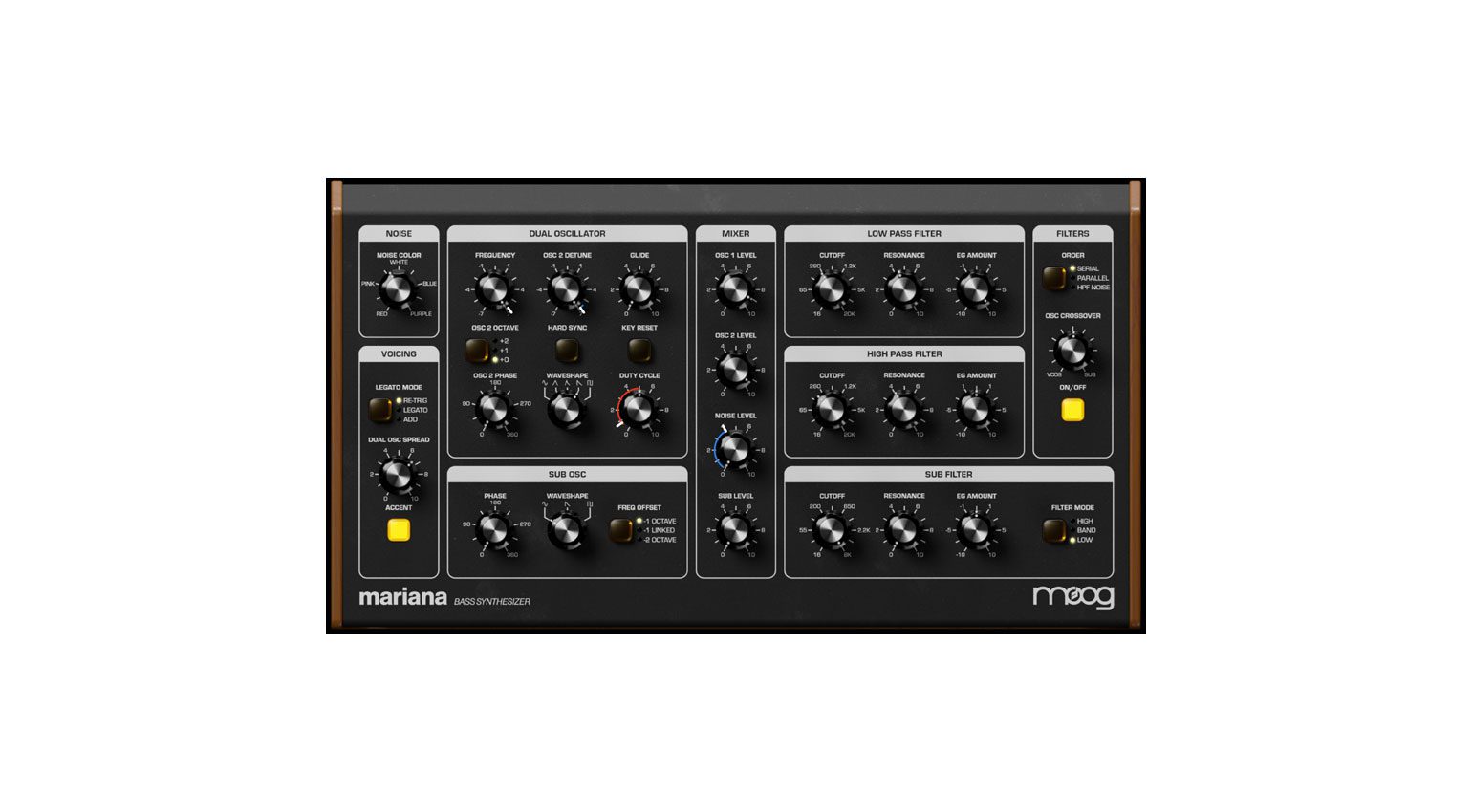
4 responses to “Moog Mariana Bass Synthesizer – Monster tones with 40 % off!”

 3,9 / 5,0 |
3,9 / 5,0 | 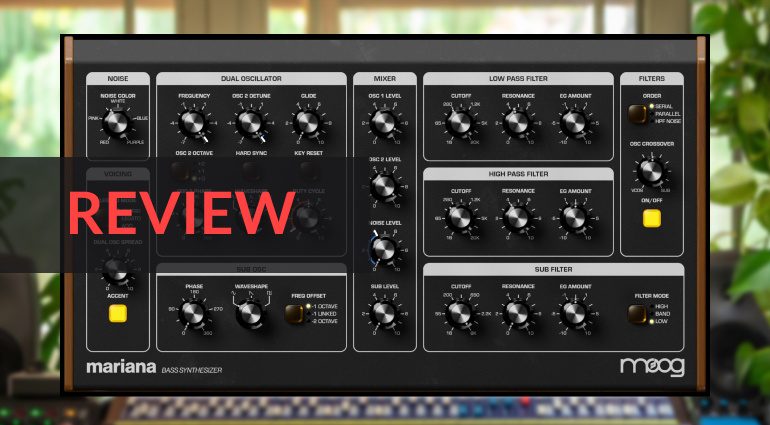
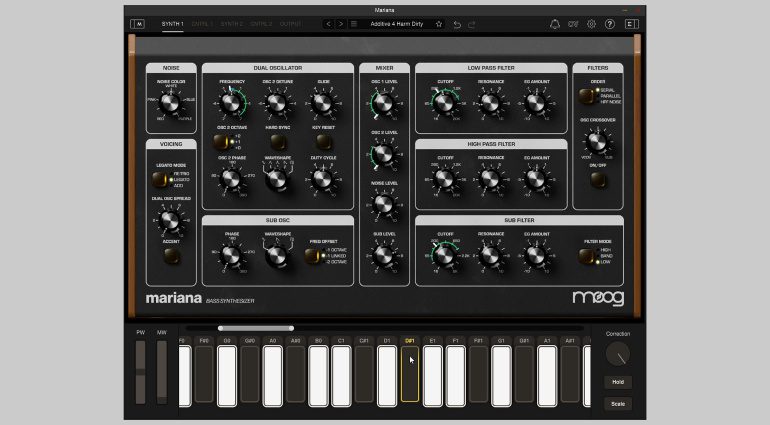
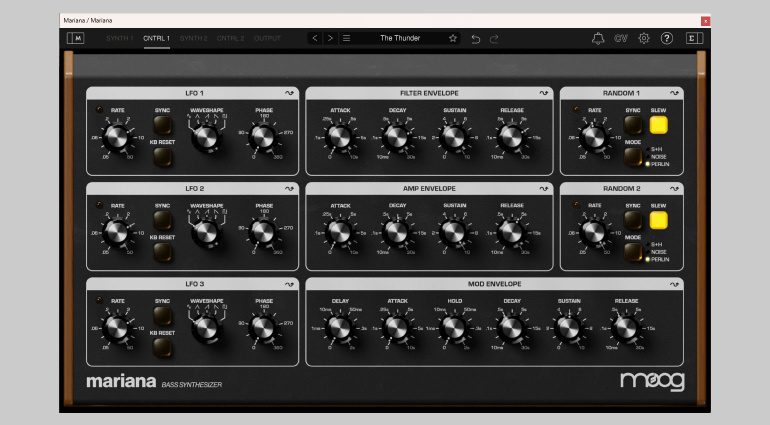
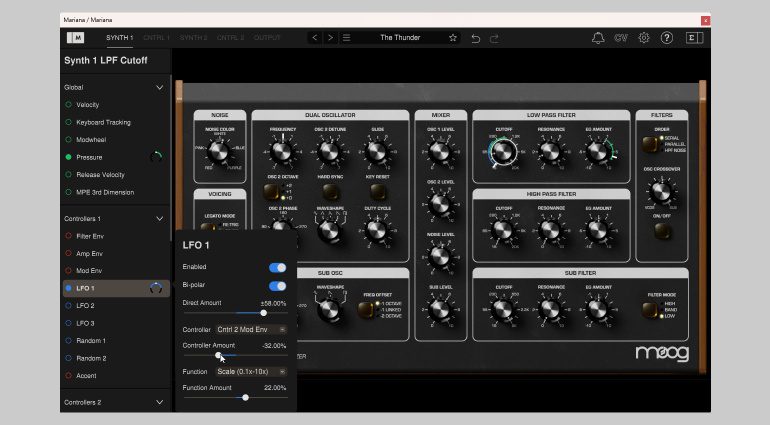
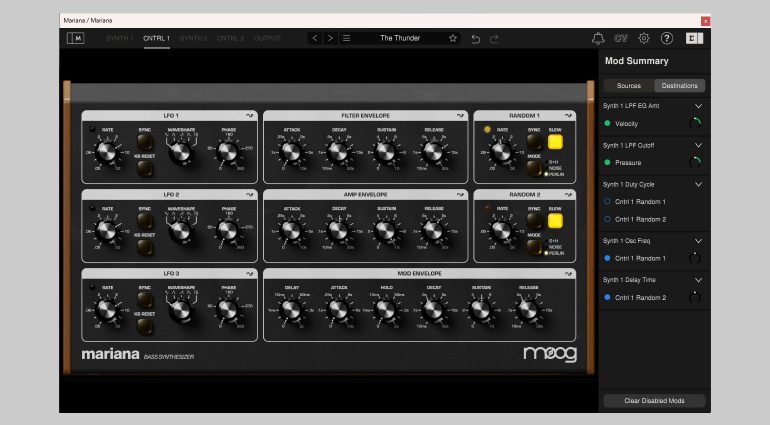
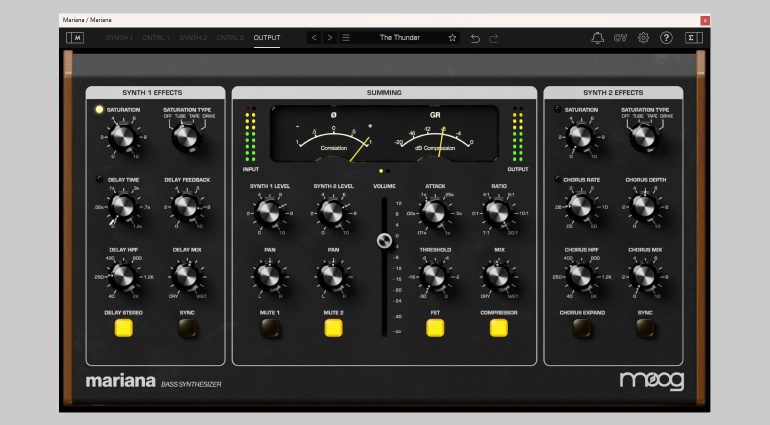
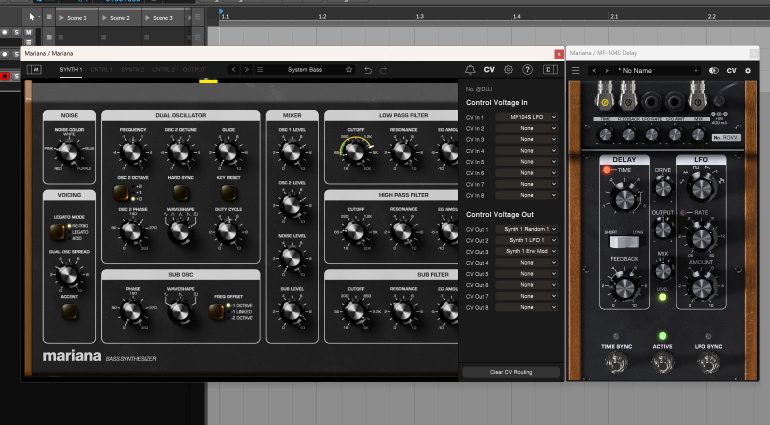








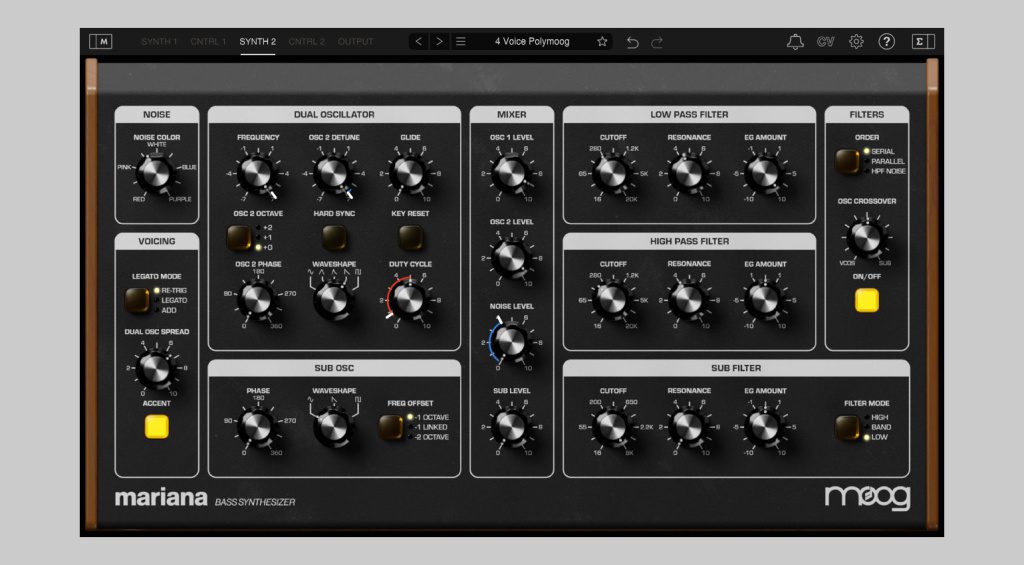
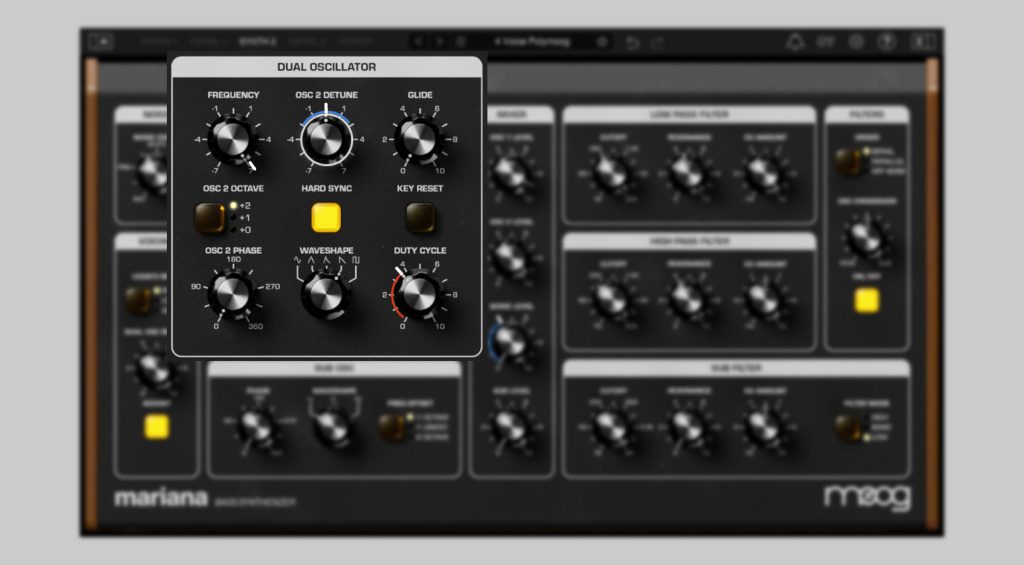
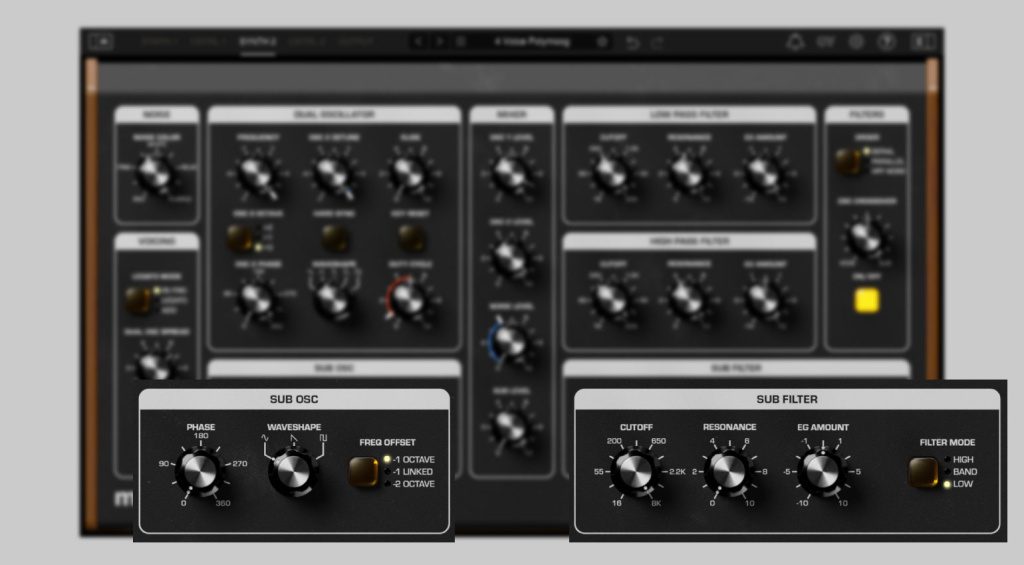
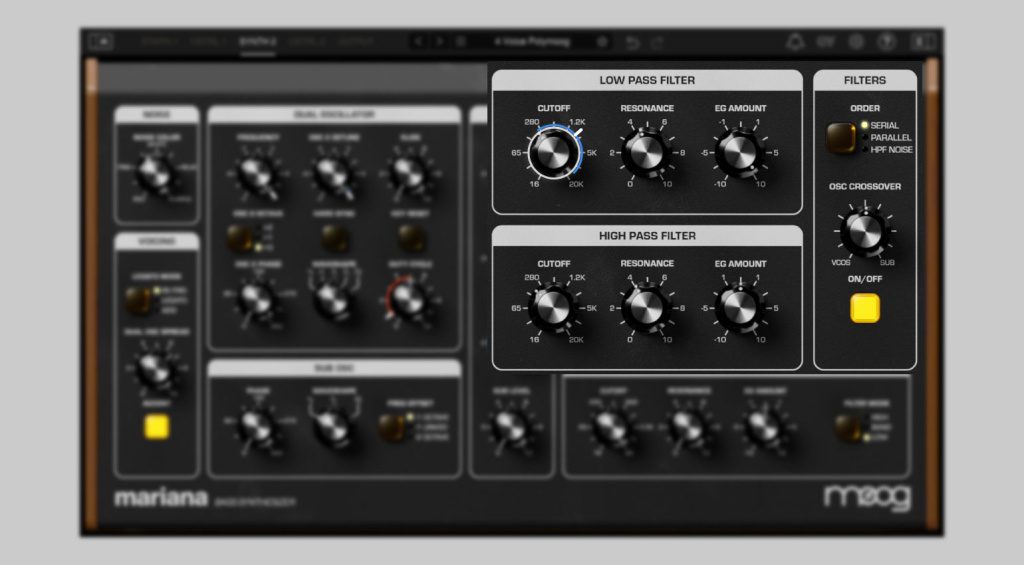
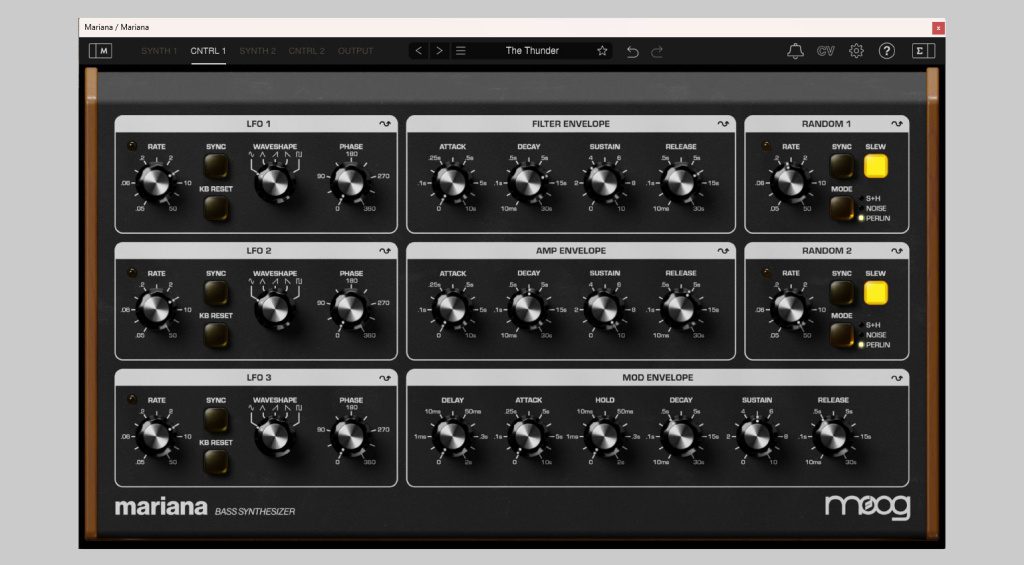
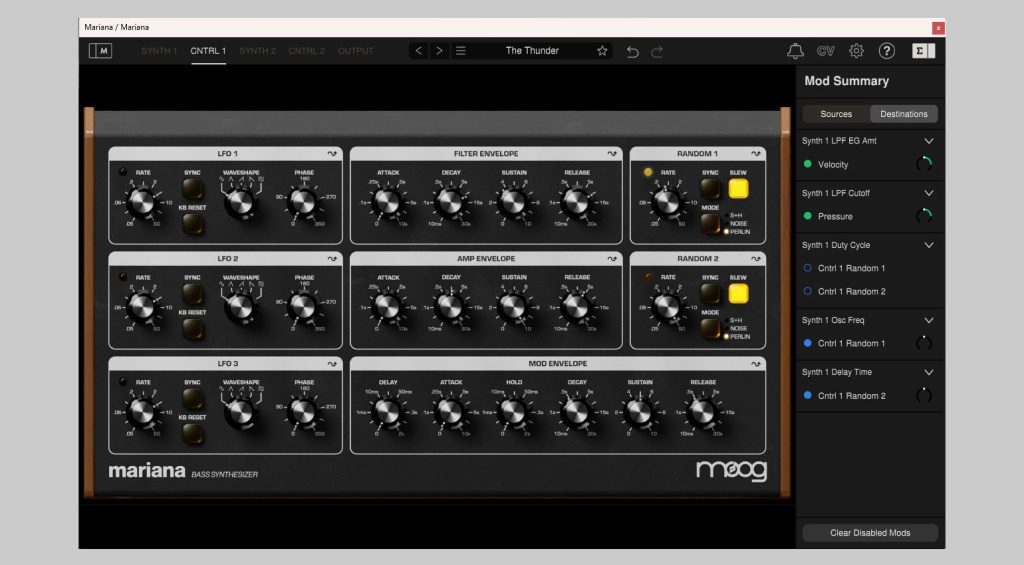
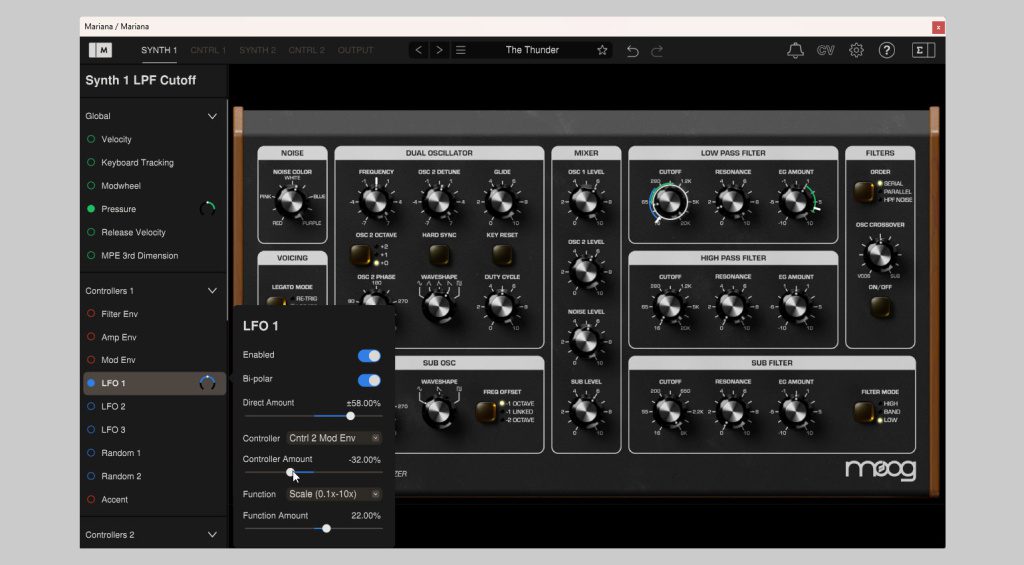
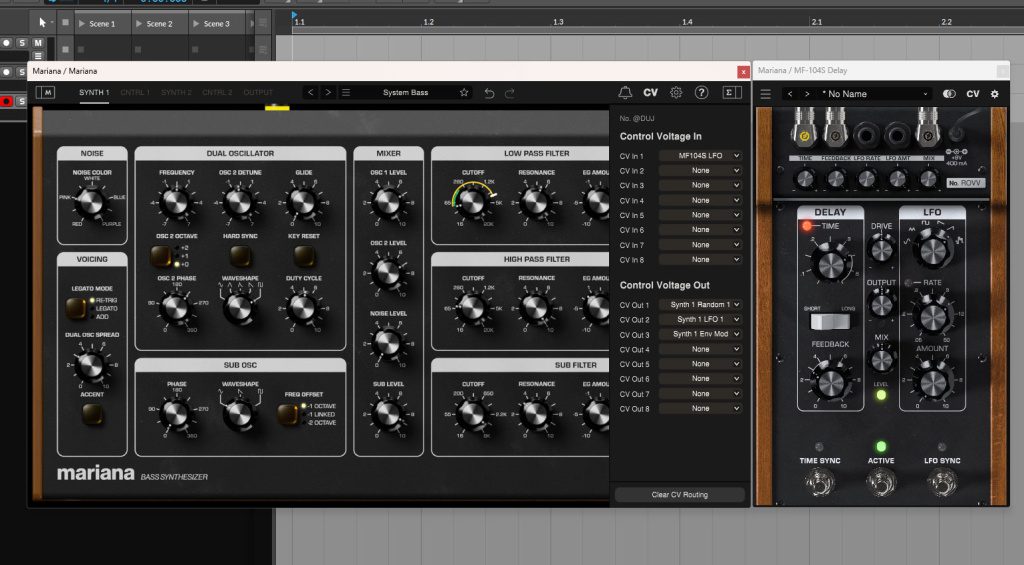
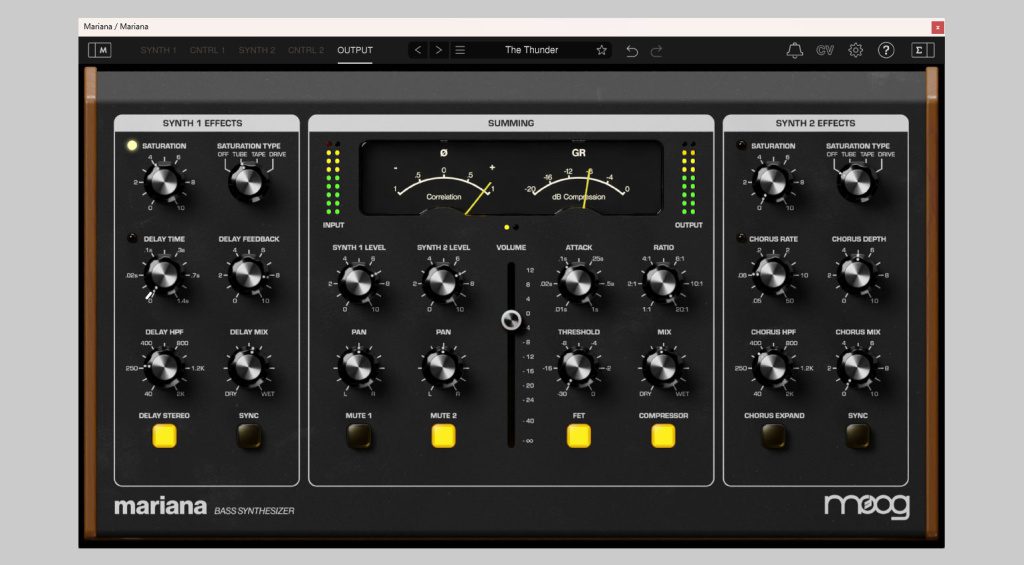
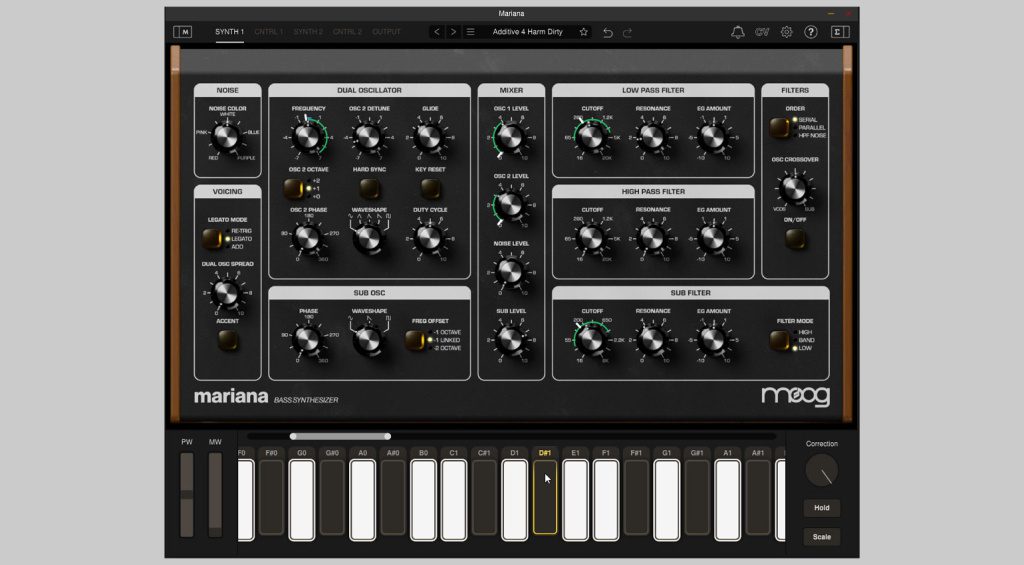

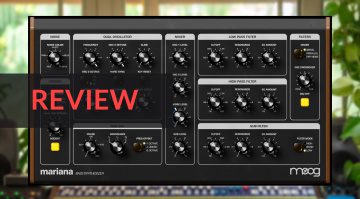

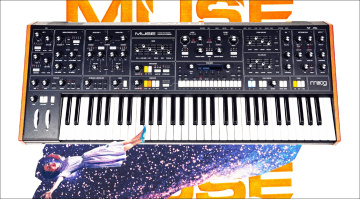

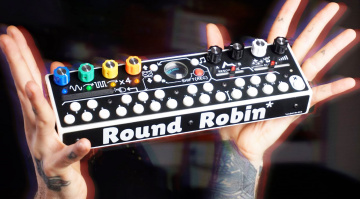


A cut and paste error ruins your important sentence:
“The one thing I’ve noticed that can’t is any of the waveform selection controls”
please fix.
After a fight with the grammer police software i’ve added a “be,” and swapped “is” for “are” – i hope that clarifies it for you.
Glad you can test the synth before buying. The demo version constantly crashes on my M1, and the simplest feature like saving duophonic mode settings doesn’t work. It resets when you reopen the plugin. This feels like an early beta at best, I honestly expected more.
I bought it right away when it came out. I run it on a normal PC, no errors.